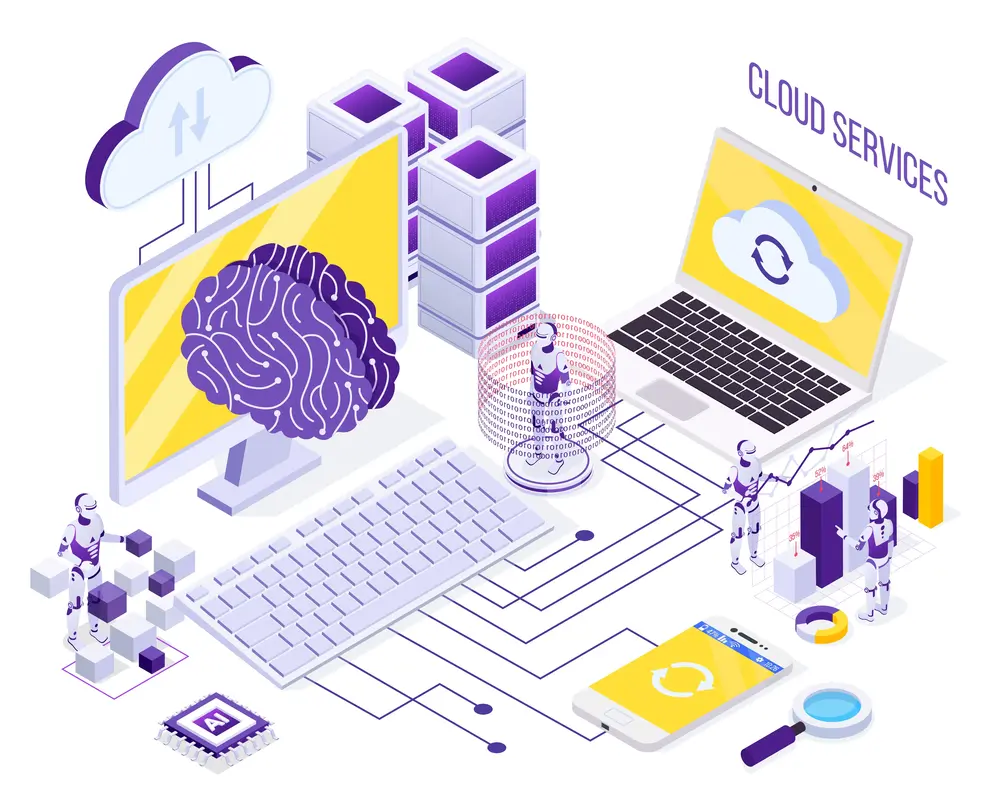SAP Basis professionals are the backbone of modern digital enterprises. Yet, they face a simple truth: a large portion of their work hours is consumed by repetitive, error-prone routine tasks that require little technical expertise.
Operating in constant “firefighting mode” doesn’t just lead to burnout — it also suppresses the true value that Basis teams can deliver. The real worth of a Basis expert lies not in fixing issues but in steering system evolution and innovation.
This is where automation becomes more than a luxury; it’s a strategic necessity for any SAP landscape aiming to stay competitive. Drawing from our field experience as a managed SAP Basis services team, this article explores five high-impact SAP Basis automation scenarios that save the most time, resolve critical issues, and generate measurable value.
Our goal is not merely to reduce manual workload — but to reinvest that saved time into system innovation, security, and business continuity.
1. Proactive System Health Check & Anomaly Detection Automation
(Preventing Fires, Not Fighting Them)
A Basis expert’s greatest success is identifying a problem before the user says, “The system is slow.” Proactive health monitoring and automatic anomaly detection form the foundation for shifting from reactive troubleshooting to proactive system management.
⚠️ A Familiar Story:
In the e-commerce sector, system load increases 3–5× during critical sales periods such as Black Friday. In one real scenario, a customer’s tablespace usage exceeded the 90% critical threshold (reaching 92%) at 03:00 AM. However, since manual checks were performed only during working hours, the issue was noticed at 2:00 PM — right at peak traffic. With automated threshold monitoring, an 11-hour early intervention window could have been achieved.
Technical Implementation Focus
| Automation Task | Technical Approach / Tools | Key Benefits |
|---|---|---|
| Centralized Log Collection & Analysis | SAP Focused Run, ELK Stack (Elasticsearch, Logstash, Kibana), or Dynatrace | Aggregates SAP application, OS, and DB logs into a single dashboard. Detects anomalies through machine learning pattern analysis. |
| Critical Threshold Alerting | Prometheus/Grafana + Python scripts | Analyzes SM21, ST22, ST03N data; sends Teams/Slack alerts when thresholds are hit (e.g., CPU >85%, disk >90%). |
| Automated Self-Healing | Shell / PowerShell scripts + SAPControl CLI / SAP Start Service (sapstartsrv) | Restarts stopped processes, clears lock entries, or cleans logs automatically. |
| Daily Health Report Automation | Custom scripts leveraging SAP EarlyWatch Alert + Python/PowerShell scheduler | Generates daily PDF reports with SM21, ST22, ST03N, DB02 data and includes weekly trend analysis. |
🔹 Advanced Use Case
With AI-powered Exception Management in SAP Focused Run, CPU or memory trends can be analyzed to predict failures 24–72 hours in advance, triggering early warnings before downtime occurs.
Automated remediation must be carefully tested and limited. For instance, endlessly restarting a failed process may worsen the issue. Each automated fix should include a cooldown period and trigger a human alert after a defined retry limit.
⚡ Getting Started
Manually review the last 7 days of critical SM21 logs.
Identify which errors occur most frequently.
Create a threshold and alert plan for your top three recurring errors.

2. Automating Periodic Maintenance and Housekeeping Tasks
(The Time Hunter)
The tasks that consume most of an SAP Basis expert’s time are the repetitive daily, weekly, or monthly maintenance jobs. When neglected, they can lead to performance degradation, spool overflows, or even data integrity risks.
⚠️ A Familiar Story:
At one SAP customer site, the RSBTCDEL2 (background job cleanup) had not been executed for an extended period. The result: the spool table grew to 480 GB, system performance dropped significantly, and backup durations increased from 14 hours to 31 hours.
Technical Implementation Focus
| Automation Task | Technical Approach / Tools | Key Benefits |
|---|---|---|
| Standard SAP Job Management | SAP Job Scheduling (SM36), UC4, Redwood, Stonebranch | Monitors critical jobs such as RSCOLL00, RSBDCREL, RSPORTE4 and automatically restarts failed ones. |
| HANA Housekeeping | HANA System Procedures (_SYS_STATISTICS cleanup, Backup Catalog Management) + Custom SQL Scripts | Automates delta merge, snapshot cleanup, and log backup optimization. |
| Database & OS Cleanup | DB13 + OS-level Scripts | Automates Oracle/HANA log backups and cleanup of old spool/temp dumps. Schedules RSBTCDEL2 jobs automatically. |
| Archiving & Data Transfer | ILM (Information Lifecycle Management) + Custom Scripts | Moves old data (e.g., BBP_PD, RSSTAT80) to archive based on defined criteria. Reduces database size and improves performance. |
| Table Size Monitoring | DB02 (Table/Index Monitor) + Custom Alert Scripts | Monitors top 20 fastest-growing tables (e.g., BALHDR, BALDAT, TPARA). Sends alerts when monthly growth exceeds 150%. |
🔹 Advanced Use Case
With Enterprise Job Scheduling tools like UC4, Control-M, or Redwood, it’s possible to build dependent job chains — for example: “Backup completed → Start log cleanup → Send report.”
On average, such automation can save 8–12 hours of manual work per week per customer environment.
⚡ Getting Started
Review failed jobs from the past month in SM37.
Check your DB13 backup schedules.
Create a monitoring plan for your top five critical jobs.
3. Automating the Transport Management Process
(Eliminating Human Error)
In SAP environments, transport management is the lifeline of the production system. But a transport imported in the wrong order can bring the entire operation to a halt.
⚠️ A Familiar Story:
In one production landscape, an incorrectly ordered transport import caused 11 hours of downtime, resulting in approximately ₺450,000 in lost sales and reputational damage. The total cost to fix the issue? 40 man-hours — the time needed to set up proper automation.
Technical Implementation Focus
| Automation Task | Technical Approach / Tools | Key Benefits |
|---|---|---|
| Automated Import & Approval Workflow | CTS+ APIs, Ansible, Jenkins, ChaRM, or ActiveControl (for ABAP systems) | Transports are automatically promoted to PRD in the correct order after QA testing. Provides traceable approval flow and audit trail. |
| Pre- & Post-Import Checks | Python / Shell Scripts + STMS Log Analysis | Verifies system state, DB connection, and locked users before import. Scans for RC ≥ 8 errors post-import and sends alerts. |
| Object Conflict Detection | Custom TR Log Parser + Table Analysis | Detects conflicting objects before import and halts the process. Minimizes rollback risk. |
| Centralized Transport Log Monitoring | SCC3 Log Aggregation + ELK Stack / Splunk | Consolidates transport activity across the landscape into a single dashboard. Automatically creates incident tickets for RC=8/12 errors. |
🔹 Advanced Use Case
Using SAP Solution Manager’s Change Request Management (ChaRM), an approval workflow can be implemented where a transport cannot move to QA without Dev Manager approval, and cannot go to Production without QA Lead confirmation.
Based on field experience, such automation reduces transport-related system errors by up to 60%.
⚡ Getting Started
Review failed imports from the past three months in STMS.
Group recurring error codes (RC=8, RC=12).
Create a checklist for your three most critical transport paths.

Further Reading
Explore the latest advancements and real-world applications of Artificial Intelligence in SAP Basis services.

4. User Management and Authorization Automation
(Security, Audit, Compliance)
In large organizations, processes such as user creation, role assignment, and deactivation for departing employees are high-volume and error-prone operations. Automation ensures both security and audit compliance across the entire landscape.
⚠️ A Familiar Scenario:
- Average of 45 new users per month
- Average of 38 offboarded users per month
- Manual processing time: 25 minutes per user
- Total: 34.5 hours = 4.3 workdays per month
- After automation: 2.5 hours (2 minutes per user)
Technical Implementation Focus
| Automation Task | Technical Approach / Tools | Key Gains |
|---|---|---|
| Automatic User Provisioning | SAP IdM, IAG, SU01 API, SuccessFactors / Workday Integration | When a new employee record is created in the HR system, a corresponding SAP user is automatically provisioned with the appropriate role set. Departed users are automatically locked. |
| Firefighter (Emergency Access) Management | SAP GRC / Access Control, Custom Scripts | Expired temporary authorizations are automatically revoked, and usage logs are forwarded to responsible managers. |
| Mass Password/Lock Management | PowerShell / Python Scripts | During system migrations or mass user operations, hundreds of accounts are managed with a single command. |
| Inactive User Cleanup | BAPI_USER_* & USR40 Reports + Python / PowerShell Scheduler | Automatically locks users inactive for 90+ days and notifies administrators—supporting GDPR/KVKK compliance. |
🔹 Advanced Use Case:
Using role mining algorithms and Segregation of Duties (SoD) conflict analysis, automation can assess potential access risks before new roles are created.
With SAP Identity Management (IDM) or SAP IAG (Identity Access Governance), HR data from systems such as SAP SuccessFactors or Oracle HCM is seamlessly transferred to SAP. Role updates are automatically triggered when employees change departments.
Automated provisioning can reduce user onboarding/offboarding times by 60–80%, minimizing human error in audit and compliance processes.
⚡ Getting Started:
- Use
SU10to list users inactive for over 180 days. - Review users created in the last 6 months via
SUIM. - Identify your Firefighter IDs (e.g.,
FIRE_FI,FIRE_MM).
5. Automation of Patch and Upgrade Pre/Post Checks
(Downtime Insurance)
Patch and upgrade activities represent some of the most stressful periods for SAP Basis teams. A single missed check can result in hours of unplanned downtime.
⚠️ A Familiar Scenario:
During a Kernel Upgrade, the sapstartsrv service failed to start because of an incompatible SAPCAR version. Result: 6 hours of troubleshooting + rollback.
If a pre-check script had been in place, the issue could have been detected in just 2 minutes.
Technical Implementation Focus
| Automation Task | Technical Approach / Tools | Key Gains |
|---|---|---|
| Pre-Upgrade Checks | Maintenance Planner API, Shell Scripts | Automatically validates over 30 checkpoints including license validity, disk space, batch job status, and backup availability. |
| Post-Upgrade Functional Tests | eCATT, Selenium, OPA5, SAP Solution Manager Test Suite | Validates core business transactions (e.g., customer creation, invoice posting) automatically—ensuring business continuity before users log in. |
| Automated Rollback Preparation | DB Snapshot Scripts, HANA Backint Integration | Creates a snapshot before patching; provides an instant rollback path in case of failure. |
| Seamless Transitions | Zero Downtime Option (ZDO) + Automation Hooks | Enables upgrades in critical systems without service interruption. |
| Automated Patching in Test/QA Systems | Ansible AWX/Tower, SAP LaMa | Runs the full patching workflow automatically in QA systems to validate processes and estimate upgrade time—minimizing production risks. |
| System Snapshot Creation | DB Native / Storage Snapshot + HANA BACKUP DATA | Captures a full system image before the upgrade, allowing restoration within 15–30 minutes if issues arise. |
🔹 Advanced Use Case:
For SUM DMO (Database Migration Option) processes, custom validation scripts can automatically verify data consistency immediately after the migration.
When an upgrade plan is created in SAP Maintenance Planner, the system automatically detects missing prerequisites and provides direct download links—working in full sync with Software Update Manager (SUM).
With the right automation strategy, post-upgrade MTTR (Mean Time to Recovery) can be reduced by 40–60%, based on real-world project experience.
⚡ Getting Started:
- Review your last upgrade log files (
SUM_*.log). - Identify common error codes (
SUM-XXX). - Create a pre-check list for your next upgrade cycle.

From Firefighting to Value Creation: The Transformation of SAP Basis Expertise through Automation
Automation is not just a “convenience tool” designed to lighten workloads — it’s a strategic transformation that is fundamentally reshaping the career path of SAP Basis professionals.
By delegating routine operations to automation, a Basis expert evolves from a “system operator” into a digital architect — someone who bridges technology and business processes to create value.
The most valuable asset of every Basis team is time. With automation, the hours once spent firefighting are redirected to high-impact initiatives:
🔹 Proactive Capacity Planning:
Model future system performance requirements and predict growth trends with precision.
🔹 Strategic Innovation Projects:
Lead transformative initiatives such as S/4HANA migration, cloud transition (RISE with SAP), or Fiori UX adoption that directly create business value.
🔹 Enhanced Security & Compliance:
Deep-dive into authorization audits, SoD (Segregation of Duties) analysis, and cybersecurity posture improvements.
📊 ROI Analysis (Example: SAP Landscape with ~500 Users)
| Scenario | Manual Effort / Month | After Automation | Time Saved |
|---|---|---|---|
| System Monitoring | 32 hrs | 4 hrs | 28 hrs |
| Maintenance Tasks | 48 hrs | 8 hrs | 40 hrs |
| Transport Management | 24 hrs | 6 hrs | 18 hrs |
| User Operations | 36 hrs | 5 hrs | 31 hrs |
| Patch Checks | 16 hrs | 3 hrs | 13 hrs |
| TOTAL | 156 hrs/month | 26 hrs/month | 130 hrs/month |
➡️ Annual savings: 1,560 hours = 195 workdays = ~10 months of full-time Basis capacity
“Automation doesn’t replace SAP Basis experts — it empowers them to focus on more strategic and technically enriching work.
The real transformation lies in shifting from a mindset of ‘I know how to do it’ to ‘I teach the system how to do it.’
The key to success is combining technical skill with process improvement intelligence.”
Start Your Automation Journey: A Step-by-Step Guide
Transitioning from theory to practice is often the hardest part.
Here’s a clear roadmap to launch your first automation project:
1️⃣ Take Inventory
For two weeks, document every task your team performs. How long does each task take? How often is it repeated? Which ones are error-prone?
2️⃣ Prioritize
Score each task based on frequency and criticality/risk. Identify the top three with the highest scores.
3️⃣ Start Small and Simple
Begin with the most straightforward of those top tasks — for instance, a simple script that scans SM21 logs daily or checks disk utilization.
4️⃣ Achieve the First Win
Deploy your first automation, validate it, and celebrate with your team. Small wins build momentum for larger transformations.
Which Scenario Should You Start With?
| Common Challenge | Recommended Scenario | Time to Quick Win |
|---|---|---|
| Frequent performance complaints | Scenario 1: Proactive Monitoring | 2–3 weeks |
| Failed backups | Scenario 2: Maintenance Automation | 1–2 weeks ⚡ |
| Transport errors | Scenario 3: Transport Management | 3–4 weeks |
| Delayed user operations | Scenario 4: IAM Automation | 2–3 weeks |
| Upgrade/patch stress | Scenario 5: Patch Automation | 4–6 weeks |
💡 If unsure: Start with Scenario 2 (Maintenance Automation) — it delivers the fastest results, carries minimal risk, and boosts team morale instantly.
Looking Ahead: AIOps and Self-Healing Systems
AI-driven automation (AIOps), log analytics, and self-healing mechanisms are rapidly becoming standard components of SAP Basis managed services.
The future of SAP Basis is not merely about “keeping the lights on” —
it’s about creating measurable value through intelligent, autonomous operations.

